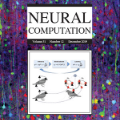It is proposed that the propagation of light in disordered photonic lattices can be harnessed as a random projection that preserves distances between a set of projected vectors. This mapping is enabled by the complex evolution matrix of a photonic lattice with diagonal disorder, which turns out to be a random complex Gaussian matrix. Thus, by collecting the output light from a subset of the waveguide channels, one can perform an embedding from a higher-dimension to a lower-dimension space that respects the Johnson-Lindenstrauss lemma and nearly preserves the Euclidean distances. It is discussed that distance-preserving random projection through photonic lattices requires intermediate disorder levels that allow diffusive spreading of light from a single channel excitation, as opposed to strong disorder which initiates the localization regime. The proposed scheme can be utilized as a simple and powerful integrated dimension reduction stage that can greatly reduce the burden of a subsequent neural computing stage.
翻译:提议将光在有障碍的光度悬浮层中的光传播作为一种随机投影来利用,以保持一组预测矢量之间的距离。这种映射是由光线阵列的复杂进化矩阵促成的,该矩阵被证明是一个随机复杂的高山矩阵。因此,通过从波导通道的一个子集收集输出光,人们可以将光从一个更高分层嵌入一个尊重强生-Lindenstrauss lemma和近乎保护Euclidean距离的低分层空间。人们讨论到,通过光线阵列的远距离随机投影需要中等的紊乱程度,允许单通道的光从一个通道发出,而不是启动本地化系统的强烈的紊乱。拟议的计划可以作为一个简单有力的综合维度减少阶段,大大减轻随后的神经计算阶段的负担。




